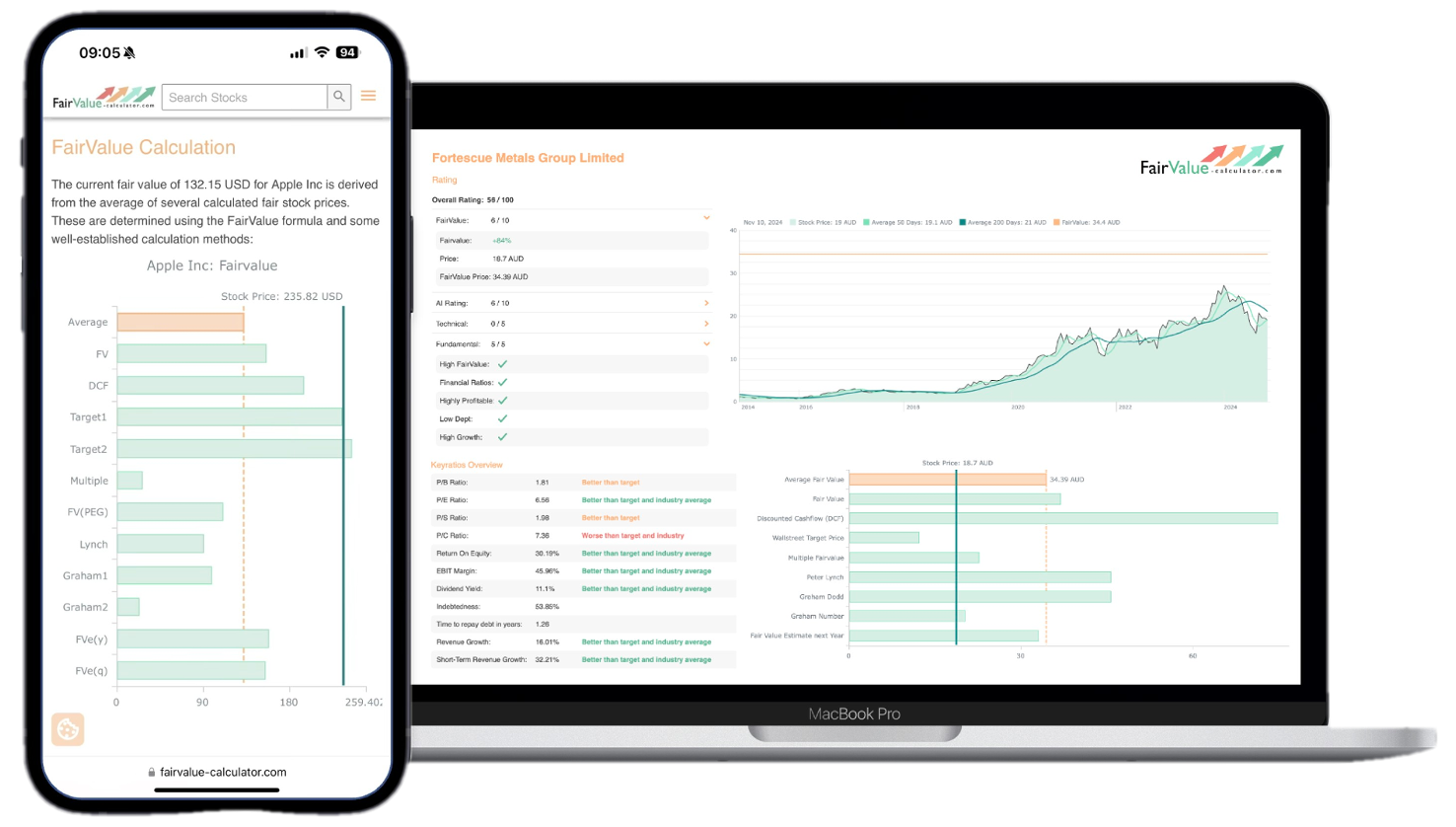In the electrifying world of finance, few topics have sparked as much debate as Tesla stock. Picture this: a current stock price sitting confidently at $302, yet an estimated fair value looming at $171. That’s a staggering 45% overvaluation. It’s a puzzle that has left many investors scratching their heads and wondering if they’re peering through the glass at an overrated bubble or an undervalued gem destined to shine by 2025. With emotions often running high and speculative fever seeming to cloud judgment, it’s time to dissect what’s driving this phenomenon and what it could mean for your portfolio.
Despite Tesla’s weak fundamentals and high PEG ratio, there’s still a hefty amount of enthusiasm buoying its stock, enthusiasm that doesn’t always align with the cold, hard numbers. While traditional valuation tools give Tesla a low score of 26 out of 100, AI analysis tells a different story, awarding it an impressive 7 out of 10. Why does the brand still hold such sway in the market? Delve into these complexities with us, using insights from fairvalue-calculator.com, a tool that strips away the emotional layers and provides a clear-eyed valuation. By the end, you may just find yourself reassessing your investment strategy with newfound clarity.
💡 Discover Powerful Investing Tools
Stop guessing – start investing with confidence. Our Fair Value Stock Calculators help you uncover hidden value in stocks using time-tested methods like Discounted Cash Flow (DCF), Benjamin Graham’s valuation principles, Peter Lynch’s PEG ratio, and our own AI-powered Super Fair Value formula. Designed for clarity, speed, and precision, these tools turn complex valuation models into simple, actionable insights – even for beginners.
Learn More About the Tools →🚀 Test the Fair Value Calculator Now!
Find out in seconds whether your stock is truly undervalued or overpriced – based on fundamentals and future growth.
Try it for Free →Are you buying or selling Tesla stock?
Deciding whether to buy or sell tesla stock right now comes down to your individual risk tolerance, investment horizon, and belief in the company’s long-term vision. At first glance, the 45% overvaluation suggests a selling opportunity, after all, the market price of $302 significantly outpaces the estimated fair value of $171. Traders looking for short-term gains might view this as a ripe moment to take profits, especially if they suspect broader market sentiment is turning skeptical.
On the other hand, long-term investors who buy into Tesla’s mission of accelerating the world’s transition to sustainable energy could see today’s lofty multiples as the price paid for ownership in one of the decade’s most transformative growth stories. Even with a PEG ratio that signals stretched expectations, Tesla continues to innovate in battery technology, software, and manufacturing. If you believe these factors will drive above-average earnings growth through 2025 and beyond, holding, or even adding to, your position could make sense. Ultimately, your choice should hinge on whether you trust the brand’s ability to justify its hype, or prefer to lock in gains before a possible correction.
Explore our most popular stock fair value calculators to find opportunities where the market price is lower than the true value.
- Peter Lynch Fair Value – Combines growth with valuation using the PEG ratio. A favorite among growth investors.
- Buffett Intrinsic Value Calculator – Based on Warren Buffett’s long-term DCF approach to determine business value.
- Buffett Fair Value Model – Simplified version of his logic with margin of safety baked in.
- Graham & Dodd Fair Value – Uses conservative earnings-based valuation from classic value investing theory.
- Intrinsic vs. Extrinsic Value – Learn the core difference between what a company’s really worth and what others pay.
- Intrinsic Value Calculator – A general tool to estimate the true value of a stock, based on earnings potential.
- Fama-French Model – For advanced users: Quantifies expected return using size, value and market risk.
- Discount Rate Calculator – Helps estimate the proper rate to use in any DCF-based valuation model.
What is the likelihood of Tesla stock dropping below 100?
Forecasting a drop to sub-$100 territory for tesla stock requires us to examine both worst-case scenarios and historical drawdowns. Since going public, Tesla has experienced several pronounced corrections, most notably in 2018 and early 2020, where pullbacks of 20%–30% were painful but not existential. A descent beneath $100, however, would imply an 67%+ decline from its current level, territory usually reserved for companies facing severe operational or financial distress.
For Tesla to breach that threshold, multiple negative catalysts would likely need to converge: a sudden slowdown in EV adoption, a failure to scale manufacturing, rising competition squeezing margins, or a broader market crash that disproportionately penalizes high-growth, high-multiple stocks. While none of these outcomes is impossible, the consensus view from fairvalue-calculator.com suggests that a drop below $100 remains an outlier scenario, historically unlikely but not entirely inconceivable. Investors who want to protect against tail risk might consider hedging strategies or setting stop-loss orders, but the average Tesla shareholder should weigh whether such a dramatic plunge fits within their personal risk parameters.

Why is Tesla stock down 39% from its all-time high?
Several factors have conspired to drag tesla stock roughly 39% below its peak. First, the macroeconomic backdrop has shifted: rising interest rates and fears of recession have made investors less willing to pay a premium for unprofitable or thinly profitable growth companies. High-growth tech names have generally borne the brunt of this rotation, and Tesla, despite its lofty market cap, hasn’t been immune.
Second, Tesla’s own execution has hit speed bumps. Production delays at new Gigafactories, intermittent quality concerns, and lukewarm delivery guidance have shaken confidence. Meanwhile, competitive pressure has stepped up as legacy automakers invest heavily in electric models. Finally, Elon Musk’s public communications and corporate governance questions have at times unsettled shareholders. Taken together, these elements have undercut the momentum that drove Tesla’s ascent to an all-time high, leaving the stock to retrace a sizeable chunk of its gains.
Is Tesla’s stock in serious trouble? Why are investors worried this time?
Investors’ anxiety around tesla stock stems from its stretched valuation and the potential for execution missteps in a more challenging economic environment. The high PEG ratio suggests that the growth baked into the price is exceptionally ambitious, investors are essentially betting on near-perfect outcomes in production ramp-ups, margin expansions, and burgeoning revenue streams from software and energy solutions.
Mounting competition is another worry. Established auto giants and well-funded EV startups alike are vying for market share, and price wars could squeeze Tesla’s margins. Regulatory headwinds, such as subsidy rollbacks in key markets—and potential supply-chain disruptions only add to the uncertainty. While Tesla’s brand and first-mover advantage remain formidable, the confluence of macro and micro risks has investors questioning whether the company can continue to outperform high expectations without a setback that triggers a deeper sell-off.
Should I sell Tesla stock now that it’s in its 52-week high and buy it back when it is low, or should I hold and wait?
Timing the market with tesla stock is notoriously difficult, even for seasoned traders. Selling now to lock in gains near a 52-week high makes psychological sense, nobody wants to watch a paper profit evaporate—but it risks missing further upside if Tesla continues to report strong deliveries or beats earnings estimates.
If you’re deeply uncomfortable with the overvaluation, a phased approach can help: sell a portion of your position at current levels to de-risk, then wait for a meaningful pullback to redeploy capital. That way, you capitalize on today’s high price while retaining some exposure to future rallies. Conversely, long-term believers may choose to hold through volatility, banking on Tesla’s potential to reshape multiple industries by 2025. Ultimately, the best path depends on your investment goals, tax considerations, and confidence in Tesla’s roadmap.
Tesla Stock Valuation Analysis
At its core, tesla stock valuation centers on forecasting future cash flows and assigning an appropriate discount rate, then comparing the result to today’s share price. Fairvalue-calculator.com automates this process using objective inputs, revenue growth estimates, margin projections, capital expenditure requirements and more, free from emotional distortions.
Based on the latest data, the tool pegs Tesla’s fair value at $171 per share, implying the stock is trading at a 45% premium. The analysis highlights a disconnect between market enthusiasm and fundamental drivers: while investors are pricing in an aggressive rollout of robo-taxis, full self-driving software revenues, and dramatic efficiency gains, the numbers suggest more tempered expectations are warranted if we assume a typical risk-adjusted return profile.
Historical Performance vs. Future Projections
Since its IPO in 2010, Tesla’s stock has delivered cumulative returns north of 17,000%, transforming early believers into multi-baggers. That meteoric rise was fueled by a narrative of disruptive innovation—electric vehicles, energy storage, and autonomous driving.
Looking ahead to 2025, projections hinge on hitting ambitious targets: 2-3 million vehicle deliveries annually, profitable FSD subscriptions, and margin expansion above 25%. Meeting these milestones would validate the sky-high multiples, but any slippage could trigger multiple compression. The fairvalue-calculator.com framework stresses caution, modeling a base case that assumes robust but not perfect execution, resulting in the $171 fair value estimate.
Factors Driving Tesla’s Stock Price
Tesla’s valuation is driven by several interlocking factors:
- Growth expectations: Investors are betting on high single-digit to low double-digit revenue growth over the next decade.
- Margin potential: Achieving and sustaining operating margins above 20% is critical to justify current multiples.
- Technology leadership: Advances in battery chemistry, autonomous driving software, and energy products underpin Tesla’s moat.
- Brand premium: Tesla commands a loyal customer base willing to pay a premium for its vehicles.
Any shift in these dynamics, be it a new competitor, regulatory change, or execution glitch, can swing sentiment rapidly, fueling sharp price moves.
Investor Sentiment and Market Dynamics
Despite tepid fundamentals, tesla stock benefits from a powerful psychological narrative. Social media buzz, Elon Musk’s high-profile persona, and frequent news coverage keep Tesla front and center in retail investors’ minds.
Meanwhile, institutional flows into thematic ETFs and growth-oriented mutual funds have amplified investor demand. When market momentum tilts positive, Tesla often leads the charge. Conversely, risk-off episodes can see the stock stumble more than less-volatile large-caps. Understanding this herd behavior is crucial for timing entries and exits.
Risks and Opportunities for Tesla Stock
Key risks include:
- Execution risk: Delays at new factories or quality control issues could undermine growth.
- Competitive pressure: Legacy automakers and deep-pocketed startups ramping EV production.
- Regulatory shifts: Changes to EV incentives or self-driving regulations.
On the flip side, opportunities abound:
- Software monetization: Full Self-Driving subscriptions and over-the-air upgrades.
- Energy business expansion: Solar, storage, and grid services.
- New market entries: India, Southeast Asia, and China’s lower-cost segments.
Long-Term Outlook for Tesla
By 2025, Tesla aims to double vehicle deliveries again, achieve sustained profitability across all regions, and roll out meaningful self-driving features. If these goals are realized, the company could justify a premium multiple well above the S&P 500 average.
However, even in a base-case scenario, where growth moderates and margins stabilize around 20%, the fairvalue-calculator.com fair value of $171 implies the stock has room to correct before becoming an attractive entry point for new investors looking at the 2025 horizon.
Making Informed Decisions for Your Portfolio
Balancing the exuberance around tesla stock with sober fundamental analysis is essential for any prudent investor. While the brand’s innovative edge and market leadership are undeniable, the 45% overvaluation signals caution.
Use tools like fairvalue-calculator.com to eliminate emotion and arrive at a data-driven estimate of intrinsic value. Whether you choose to hold, trim, or add to your position, grounding your decision in valuation discipline will serve you better than chasing headlines or hype.
Tesla Stock Valuation: A Closer Look
Diving deeper into tesla stock valuation reveals a tale of two narratives: one painted in rosy growth projections, the other in conservative cash-flow forecasts. Our analysis hinges on expected vehicle deliveries, average selling prices, margin trajectories, and capital spending needs.
Fairvalue-calculator.com aggregates consensus analyst estimates and overlays them with a proprietary risk premium, producing a fair value that strips away market noise. The result: a midpoint value near $171, with a range of $140–200 depending on bull and bear case assumptions.
Fundamentals vs. Market Enthusiasm
Tesla’s fundamentals, revenues, earnings, cash flow, tell a story of rapid expansion but thin profit margins relative to other automakers. In contrast, market enthusiasm is sky-high, driven by the promise of secular tailwinds in electrification and autonomy.
This divergence explains the 26/100 fundamental score versus a 7/10 AI sentiment score. Investors must decide whether to side with the data or the excitement. History shows that fundamentals win out over the long run, but short-term momentum can carry stocks well beyond reasonable valuation boundaries.
Fairvalue-calculator.com: Unveiling the True Value
Fairvalue-calculator.com is a no-frills valuation tool that replaces emotional biases with transparent inputs and outputs. Users enter key assumptions—growth rates, margins, discount rates—and instantly receive a fair value estimate.
No spreadsheets to wrestle with, no hype-driven numbers—just clean, repeatable analysis that helps investors determine whether tesla stock sits at a discount or premium to its intrinsic worth.
Understanding Tesla’s PEG Ratio
The PEG ratio, price/earnings divided by growth rate—is a popular gauge of valuation relative to growth expectations. At a current P/E north of 80 and expected earnings growth of ~30%, Tesla’s PEG ratio hovers around 2.7, more than double the benchmark of 1.0 that signals fair valuation.
A high PEG suggests investors are paying steeply for each unit of expected growth. Unless Tesla outpaces consensus growth estimates by a wide margin, the elevated PEG warns of potential multiple compression if growth disappoints.
Risks and Rewards of Investing in Tesla Stock
Reward scenarios include faster-than-expected adoption of EVs, breakthrough progress in autonomy, and margin expansion from software monetization. In these outcomes, the stock could re-rate higher, justifying today’s elevated multiples.
Conversely, risks such as weaker demand, margin pressures from competition, or regulatory hurdles could trigger a correction. Investors must weigh these opposing forces and consider position sizing, stop-loss strategies, or hedges to manage downside.
Expert Forecasts for Tesla Stock Performance
Analyst targets for tesla stock cluster between $140 and $320, reflecting starkly different views on execution and market opportunity. Bullish strategists cite Tesla’s leadership in batteries and software; bears point to lofty multiples and narrowing moats as red flags.
Consensus sits around $200, still 34% below current levels. This median forecast aligns closely with fairvalue-calculator.com’s midpoint, reinforcing the view that the market may be too exuberant at present.
Conclusion: Navigating the Tesla Stock Conundrum
Tesla stock presents a classic growth-versus-value dilemma. Enthusiasm for disruptive innovation clashes with sober valuation discipline, leaving investors torn between FOMO and fear of overpaying.
By anchoring decisions in data from fairvalue-calculator.com—rather than headlines or hype—you can navigate this conundrum more confidently. Whether you decide to buy, hold, or trim your position, a clear view of Tesla’s intrinsic worth will guide you closer to your financial goals. Give the tool a spin for free, and see if today’s price aligns with your own valuation framework.







